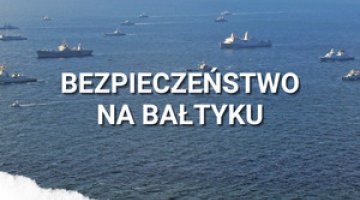More US Special Operations Forces in the Baltic states
In late June, the commander of the US Special Operations Command (USSOCOM) Gen. Richard Clarke was accompanied by the commander of the US Special Operations Command Europe (SOCEUR) Maj. Gen. David Tabor when he visited Lithuania, Latvia and Estonia. The talks included strengthening military cooperation, threats from Russia, investments in military infrastructure in the Baltic states, and their participation in military operations. US Special Operations Forces (SOF) soldiers have been continuously present in the Baltic states since 2014/2015 on a rotational basis. Initially, their activity was not in the public spotlight. This has changed recently due to increasingly frequent exercises and related investments in infrastructure at the Latvian SOF base in Riga which will be used by the US SOF soldiers. These include two helipads and an ammunition storage, half-funded by America’s European Deterrence Initiative. In January 2021, SOCEUR also deployed a forward staff element for the Baltic region in Estonia (the Baltic Region Special Operations Headquarters), detached from the US Special Operations Command in Stuttgart. One of its key tasks will be to develop the cooperation and exercises of special forces in a region which includes the Baltic states, Denmark, Norway, Poland, Sweden and Finland.
Commentary
- The US SOF in the Baltic states focus on military exercises and training Lithuanian, Latvian and Estonian SOF. They are relatively new units, though they do have operational experience gained in Afghanistan (Estonia's special forces are currently engaged in the Sahel). Lithuania established its SOF in 2002 and Estonia as late as in 2012. The US SOF soldiers not only exercise with their Baltic counterparts, but also with the military branches of the Lithuanian, Latvian and Estonian Armed Forces, as well as volunteer territorial defence forces and border guards. These exercises are largely aimed at bolstering their capabilities to counter Russian hybrid warfare in cooperation with US special forces. US SOF are also enhancing their skills needed to operate in the territory of the Baltic states. This includes airborne exercises using V-22 Osprey aircraft. In addition, they support other US forces exercising in the Baltic states, such as during the DEFENDER-Europe 21 exercises (as combat controllers, for instance).
- In 2017 the US ceased to provide continuous deployments of company-size forces in the Baltic states, and a permanent military presence there has since been ensured by European allies and Canada as part of multinational NATO battlegroups. However, the US Army has rotated a helicopter unit in Latvia since 2017 and an armoured battalion in Lithuania since 2019. These forces are part of, respectively: the Army’s Armoured Brigade Combat Teams and the Combat Aviation Brigades rotating on NATO's eastern flank. In addition, the US has consistently increased the commitment of its special forces in Lithuania, Latvia and Estonia. It also provides the largest contribution to military exercises in the Baltic states. The most important and largest land drills in the Baltic states until 2018 were the US-led Saber Strike exercises. Since 2020, their role has been taken over by the DEFENDER-Europe exercises, conducted partly in the Baltic states (e.g. US airborne and artillery exercises in Estonia in 2021). The main naval component drills in the Baltic Sea are the US-led Exercise BALTOPS, which has encompassed US amphibious operations in the Baltic states. This is complemented by regular US Air Force exercises (including those involving strategic bombers) and detachments of A-10, F-15 and F-16 aircraft to Estonia within the USAF Theater Security Package framework. Multinational US-led and national military exercises in the region have been gradually integrated to simulate a multi-domain operation defending NATO's eastern flank, including the Baltic states, in a high-end conflict. US forces play a leading role in these operations, although the involvement of European allies, in particular the UK and Germany, has also steadily increased. Unlike the US, NATO has not organised large-scale collective defence exercises in the Baltic states, with the exception of the deployment of the land elements of NATO's Very High Readiness Joint Task Force (VJTF) to Lithuania in 2020 during Exercise Brilliant Jump.




